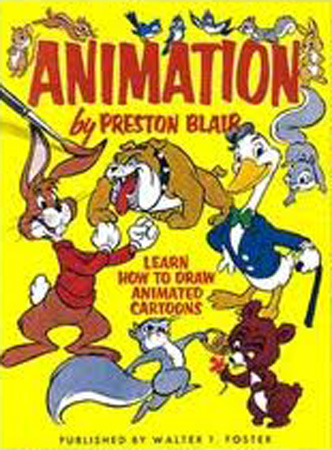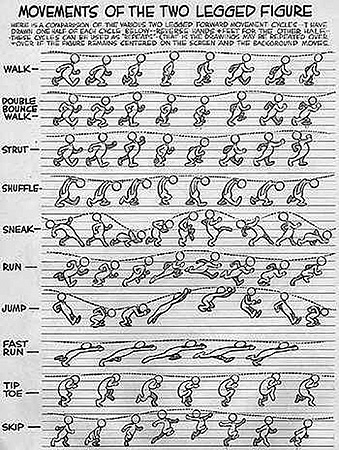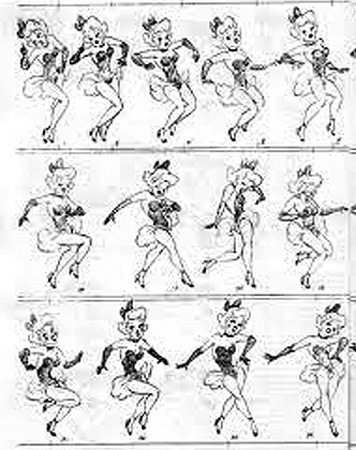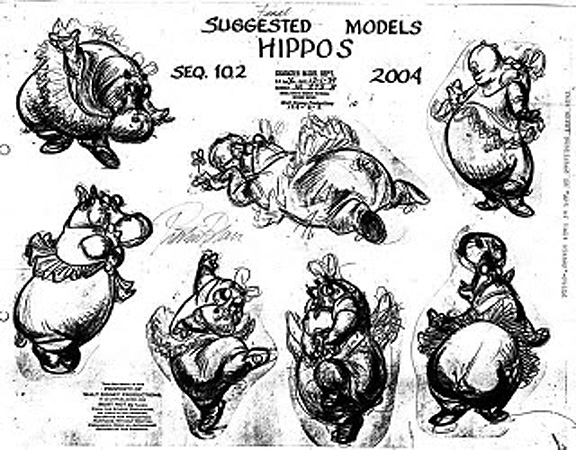
PIXAR = "To make pictures"
Click on the logo above to go to Pixar's homepage.
Pixar Myth No. 3: The Movies Were Steve Jobs's Vision
No, they weren't. The "group now known as Pixar" first had the vision to make the first digital movie in the 1970s when part of the New York Institute of Technology on Long Island. There they worked side-by-side with a traditional feature-film cel animation studio and learned their craft. Ed Catmull and Alvy Ray Smith first joined forces there in early 1975. It took 20 years to realize the vision of the first digital movie.
Ed Catmull had wanted to create animated movies since childhood and had waited for Utah's Ivan Sutherland to form a Hollywood movie company based on computer graphics. It had not happened, so Ed ended up on the NYIT campus instead. An early piece of 3D animation by Ed, made for his PhD dissertation, was reused in the movie Futureworld.
Alvy Ray Smith was an animation aficionado who had taught himself animation from Preston Blair's famous $1.50 how-to book. (Preston Blair was the animator of the dancing hippos in Fantasia.) Alvy had also taken an animation class before first joining Xerox PARC and then NYIT.[1] His first animations at each place [1974 and 1975] came from Preston Blair's book.[2] He and David DiFrancesco, who came with Alvy from Xerox PARC, were awarded a National Endowment for the Arts grant at NYIT to explore the new artistic medium of "raster graphics" and created many animations together.




Ed and Alvy, at the encouragement of a young animator, Jamie Davis, whom they had met at NYIT's cel animation studio, paid a visit to director Ralph Bakshi in Los Angeles, where Jamie had subsequently gone to work. Bakshi's animated films (Fritz the Rabbit, Heavy Traffic) were favorites of the 60s generation, but Bakshi stood up Ed and Alvy.
Ed and Alvy made annual pilgrimages to Disney from the mid 1970s on. (See notes of the 1977 visit.) During one of these visits they met John Lasseter, a young animator who wasn't frightened of them - as most animators had been. Alvy and John bonded over Preston Blair's original drawings for the dancing hippos in the Disney archives, the pink elephant scene in Dumbo, and other classic bits of animation. Ed was there too. When John was fired by Disney, Ed and Alvy (at Lucasfilm) snapped him up. Alvy directed John in his first animation at Lucasfilm, The Adventures of Andre & Wally B., which served as the group's announcement to the world in 1984 that character animation with computers had arrived.
While at Lucasfilm, Ed repeatedly asked George Lucas if the graphics group could do animation, and told no. Alvy directed the graphics group in the "Genesis Demo" of Paramount's Star Trek II: The Wrath of Khan, the first use of 3D raster graphics in a successful motion picture. Then George included work from the graphics group in his next film, Return of the Jedi. These pieces revolutionized special effects in movies, but were not along the path of character animation that the group aspired to.
Disney came to Lucasfilm and negotiated a contract with its Computer Graphics Project to build CAPS, the Computer Animation Production System, which digitized Disney's classic cel animation process. Alvy created and wrote the detailed proposal for CAPS over about two years in consultation with Lem Davis at Disney and encouragement from Roy Disney, Walt's nephew. (See CAPS proposal to Disney 1985 version, and CAPS executive summary for Pixar in 1986.) Alvy negotiated this deal over many months with Disney's Bob Lambert. (See CAPS first payment and CAPS letter from Lambert.) It was very successful (it was completed at Pixar) and bound the two companies together in a mutual admiration society.
While still at Lucasfilm Alvy negotiated with a large Japanese company what both groups thought would be the first digital movie. It was to be based on Monkey, the hero of Journey to the West, a classic in Asia. After months of negotiations, and story meetings - with John Lasseter's story ideas of primary importance - Alvy ran the numbers very seriously for the first time. He discovered to his dismay that Moore's Law still had not proceeded far enough to make computation of a movie cost effective, and so backed out of the deal, just as Pixar was spinning out from Lucasfilm.
NOTE. All of the above happened in the decade leading up to and including 1986, before Steve Jobs ever came on the scene - certainly before he assumed the putative position of running the company in about 1995. Making animated movies was not his idea or his vision.
John Lasseter proceeded at Pixar to create and direct a sequence of short films, tuning the animation "chops" of Pixar. One of these, Luxo Jr., was nominated for an Academy Award. Another, Tin Toy, won Oscars for John Lasseter and Bill Reeves. (See Oscar celebratory shapshots.). This was done while Steve was on the board of Pixar but long before he assumed some of the management (in early 1995). He was aware, as a board member (chairman often), of all this of course but the pieces were not his doing in any way (other than voting the use of Pixar company money to fund them - again, a great money man for Pixar).
Pixar built hardware at first in order to pay the bills while waiting for the price of computation to drop sufficiently (from Moore's Law) to make a movie. The moment it did drop that far, Disney approached Pixar to make Toy Story. Alvy departed in late 1991 after an early fundamental meeting at Disney convinced him the movie was to become a reality and after a treatment of the movie was made.[3] That meeting was convened to induce John Lasseter to work with a company that had fired him. The meeting worked, and Ed Catmull negotiated the contract. Steve was not running Pixar for the two years or so while Toy Story was being made. Ed Catmull was.
When New York critics told Disney that Toy Story was going to be huge, then Steve Jobs assumed leadership of Pixar (but always with Ed Catmull in the Office of the President). He did a great job of negotiating movie deals with Disney, with the Pixar IPO (a piece of business genius), and the purchase of Pixar by Disney. But he was not the inspiration behind the business, nor did he have anything to do with which movies were made, or what their content was. He was not allowed in the story room. The look of Pixar comes directly from John Lasseter and the artistic talent he hired. The feel of Pixar comes from Ed and (until he departed in Sept 1991) from Alvy. Steve was a great money man, a crucial one, for Pixar, which made him a billionaire in return.
____________
[1] Alvy has in his possession a letter dated 19 July 1974 to Xerox PARC asking for official employment to utilize Dick Shoup's SuperPaint machine and program, which he had already been using unofficially. The letter includes this: "One of my first intuitions on seeing the machine was that it would be a fine instrument for making animated films. So I immersed myself in 'classic' animation in preparation for using the machine this way. For example, I took a course in the subject from Steve Smith, a professional animator. What deeply impressed me from this schooling was the utter drudgery of the classic approach. . . . I have made several short animated films (employing, at times, the concept of (2+1)-D painting and certainly improvisation) on the machine. . . . I propose continued development of the machine as an animation device. I believe the commercial applications are obvious: TV commercials, feature films, educational films, a home video cassette market yet to be developed."
[2] Preston Blair's walk cycle, depicted above, was implemented by Alvy at Xerox PARC in 1974, the dancing lady animation, also shown above, was implemented by Alvy at NYIT in about 1976.
[3] Alvy has in possession a document, dated 9 Jan 1991, titled Alvy, Chuck and Ed's Itinerary Disney. It mentions also Ralph [Guggenheim], Bill [Reeves], and John [Lasseter], also Steve Jobs, Peter Schneider, and Jeffrey Katzenberg. Alvy has in his possession a document, dated 1991, titled Toy Story (working title), by John Lasseter, Andrew Stanton, and Pete Doctor. It is a 12-page treatment of the movie. (Chuck was Chuck Kolstad.)